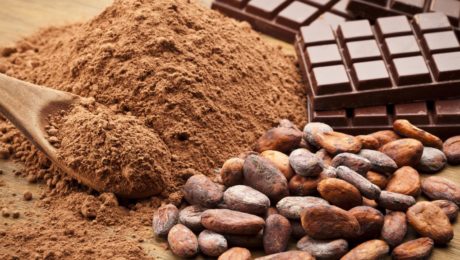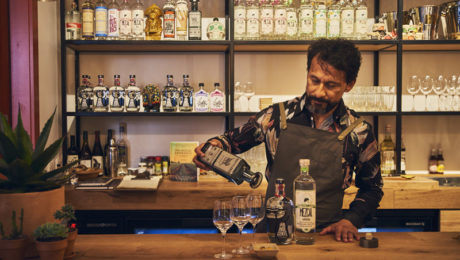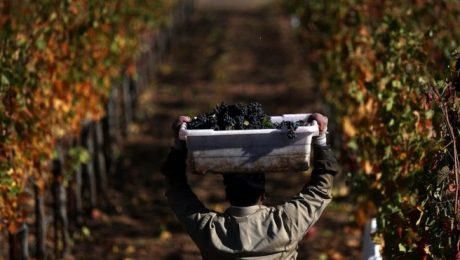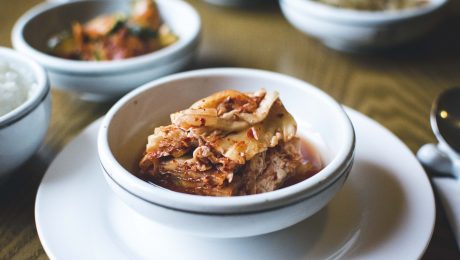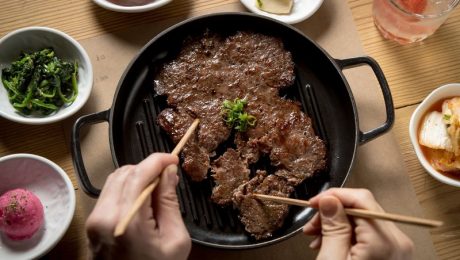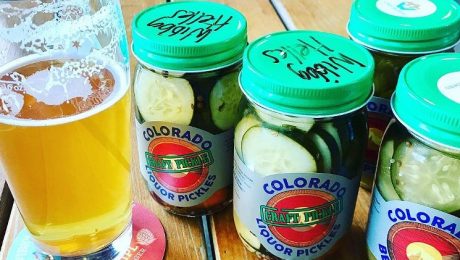Fermenting Cacao Enhances Health Benefits
Fermenting cacao beans to make chocolate decreases the amount of healthy antioxidants polyphenol by as much as 18%. So shouldn’t chocolate made from unfermented cacao beans increase the health benefits of chocolate? Scientists at Penn State explored this hypothesis. The results were surprising.
“In fact, just the opposite,” says Joshua Lambert, professor of food science at Penn State who led the study. “We found that some of the most processed samples seemed to have the largest positive impact on mice in this research. The aim of this study was to compare the effect of fermentation and roasting protocols on the ability of cocoa to mitigate obesity, gut barrier dysfunction and chronic inflammation in high-fat-fed, obese mice.”
The results, published in the Journal of Nutritional Biochemistry, detail how the health of mice was affected after being fed dietary cocoa powder. Groups of obese mice were fed seven different dietary supplements of cocoa powder over eight weeks. Those seven powder supplements were formulated from different bean processing techniques, ranging from no fermentation and no roasting to various combinations and temperatures.
The mice’s weight reduced by up to 57% eating cocoa powder, regardless of the bean’s fermenting and roasting techniques. Their gut permeability (an important contributor to development of fatty liver disease) also reduced by up to 79%. The gut intestinal microbiome also improved.
Lambert explains, when mice get cocoa as part of their diet, the compounds in the cocoa powder reduce the digestion of dietary fat. When it can’t be absorbed, the fat passes through their digestive systems. Lambert hypothesizes this process may occur if humans are given cocoa.
Read more (Penn State)
- Published in Uncategorized
Noma Chefs on Restaurant Innovations
Creativity in a restaurant comes from reinvention. Weeks before the entire Noma staff move to Kyoto, Japan for five months for their latest pop-up, founder René Redzepi and two of Noma’s longtime chefs shared how they stay innovative in the grind of restaurant work.
“As a cook, you go through the seasons each year and it’s the same, it’s not like you’re going to find a new species of birds or the world is going to invent a new animal, you’re going to have to constantly see fresh opportunity in the same winter beats and the same winter onions and so on and so forth,” Redzepi says. “It’s up to us to put the imagination.”
Noma has been awarded multiple times as one of the best restaurants in the world, and earned a third Michelin star last year. Regarded as the pioneer of modern restaurant fermentation, every dish at Noma features something fermented. Noma is regarded as the pioneer of modern gastronomy fermentation, igniting a worldwide movement experimenting with unconventional ferments in the restaurant kitchen to create flavor-packed dishes.
As part of promotion for the new book “Noma 2.0: Vegetable, Forest, Ocean,” authors René Redzepi, Mette Søberg and Junichi Takahashi (both Noma chefs), traveled from Copenhagen to Los Angeles. The book’s title refers to Noma’s three iconic serving seasons. Vegetable in the summer, made with foraged and plant-based items; forest in the fall, when they serve wild game and mushrooms; then ocean in the winter, when seafood is on the menu.
“It provided an outrageous pressure on the team,” he added. “It sounds like nothing, but three times a year coming up with this new way is really, really, really, really hard.”
Redzepi described opening Noma 20 years ago and discovering bright green sea grass that tasted like coriander. It was a pivotal moment.
“That epiphany, that moment where you feel like a child that’s discovered the most amazing thing, those discoveries don’t come that often anymore, I will have to be very very honest, because we’ve just tasted so many things,” Redzepi says. “It’s harder now.”
In the restaurant industry, where pay is low and hours are long, it stifles a chef’s creativity “to be in factory work…it’s simply not worth it.”
But Soberg, head of research and development, said creativity “is really a gift that Rene has given us, because we get to work with these three distinct menus. It’s more about the storyline of the menu.”
She added that she enjoys brainstorming with Noma chefs – a diverse team from all over the world – for the ingredient-driven game and forest season, the more simple seafood where a scallop can shine with umami butter and the complicated vegetable season.
Takashi, a 10 year veteran of Noma, is known as having the most complicated recipes on the staff. The book features one of Takashi’s recipes for cod that is 17 pages long. He said, while working at Noma can be learning techniques, the chefs from different backgrounds all teach each other and share ideas.
“We are also learning from some traditional, international techniques , which is very important for us,” he adds. “I think that’s more important than the fancy stuff, honestly.”
Investing new dishes at Noma can take years of planning. Executing an idea into service “is by far the most complicated part,” Redzepi says. The restaurant spends 10 days before a season opening in a dress rehearsal – then 2 days in testing full serving – finding critical moments – like will a sauce split during serving? Will the weather make the produce taste different?
Intuition, Redzepi says, is a critical skill for a chef to possess and adapt as ingredients change. “You can’t follow the recipes, it’s all in your hands, in your intuition, in your cooking skills. A drop of acidity, a touch of salt. Recipes are guidelines, but the cook will ultimately create the magic.”
- Published in Uncategorized
Mezcal “Like Kissing Mother Earth”
Edmundo Farrera describes the taste of mezcal as a complex experience: “First you taste the valley where the agave plant was grown, next the earth it came from, and then on to taste the cosmos and time.”
The Veracruz, Mexico native who opened New Zealand’s first mezcal bar says each sip of a great mezcal is “so beautiful and powerful, like pyrotechnics exploding on my palate.”
An ancient drink that dates back to the Aztecs, they agave was eaten and used in ceremonies. Mezcal came about after the colonization in Mexico by Spainards. They brought Filipino slaves with them, who shared distillation techniques with the Aztecas.
Farrera says mezcal has long been popular in America but only recently it’s becoming more popular globally. American foods and sommeliers, he notes “are fascinated, even more than us, with these agave spirits. They get into it, they study it, a good percentage of American sommeliers, like with wine, can recognise different species of agave in a blind tasting of mezcal.”
He advises “a real mezcal drinker will never touch a cocktail.” Mezcal should be enjoyed sip-by-sip, he says, with the first sip awakening the palate and the second sip experiencing the multi-dimensional taste.
Read more (Stuff)
- Published in Uncategorized
How ‘Food Porn’ Posted on Social Media Has Become an Industry
Restaurants, food businesses, agricultural entrepreneurs: “be sure to recognize the food porn craze as your best friend, when it comes to growing your following and your business” advises Entrepreneur Mag. In your online marketing like social media apps and website, use well-lit food photography and include images of people enjoying your food.
- Published in Uncategorized
Industry ferment: US wine industry crushed over tariffs
Increasing wine consumption makes China critical to the future of the industry, but trade disputes are hurting U.S. winemakers. China included wine on a list of potential tariffs. Exports represent 5% of US wine sales – 5% of that ($79 million worth) is sent to China.
- Published in Uncategorized
Global Kimchi market to grow as Global Kimchi heats up
More consumers are buying kimchi. A market analysis of the Korean fermented vegetable dish found that, globally, kimchi sales will grow by 20-45% a year through 2022. Since 2012, the kimchi market has steadily grown in the U.S. and India.
- Published in Uncategorized
Her Name Is Han Is NYC’s Cutting Edge of Korean Soul Food
A growing population of Korean Americans means an uptick in Korean restaurants across the U.S. The new Her Name is Han in NYC serves modern twists on Korean soul food. Fermented dishes include radish kimchi jambalaya, banana-flavored rice beer and homemade ssamjang (fermented soy bean sauce).
Read more
- Published in Uncategorized
The Kefir Cookbook is a love letter to Chicago written in cultured milk
The CEO of kefir-based Lifeway Kefir has published a cookbook, “The Kefir Cookbook.” In it, Julie Smolyansky shares how her father began fermenting kefir in their Chicago basement. The international recipes all incorporate kefir, and include lasagna, gyros, classics from Julie’s Russian roots and recipes from some of Chicago’s favorite chefs.
- Published in Uncategorized
Cultured South—Atlanta’s First Kombucha Taproom—Opens May 20
Georgia’s getting their first kombucha taproom. Cultured South will offer fermented creations to eat and drink, like kombucha tea, kefir, Jun, drinking vinegars, wild ferments, cold brew and vegan cheeses. Their grand opening in May will coincide with the 2nd annual Atlanta Fermentation Fest. Cultured South is founded by the creator of Golda Kombucha, Melanie Wade.
- Published in Uncategorized
These Boozy Pickles Find Flavor in Colorado Breweries and Distilleries
A Colorado food artisan is combining two popular fermented favorites: pickles and alcohol. Colorado Liquor Pickles creates their unique, boozy flavors with craft spirits from local breweries and distilleries. The cucumbers are also from organic, CO farmers.
- Published in Uncategorized

